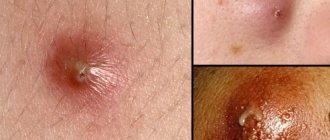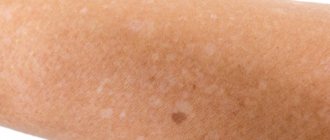July 30, 2020
To talk about local inflammation, you must first understand what lymphadenitis is in general. This is an inflammatory process in the lymph nodes, sometimes accompanied by suppuration
To talk about local inflammation, you must first understand what lymphadenitis is in general. This is an inflammatory process in the lymph nodes, sometimes accompanied by suppuration. It manifests itself through enlargement of one or more lymph nodes and can occur in several regions of the body at once. Clinical signs of the disease depend on the form and type of lymphadenitis: acute or chronic, regional (damage to lymph nodes of one anatomical group) and generalized (involvement of several groups of lymph nodes), serous, purulent, gangrenous, hemorrhagic, phlegmonous.
In the body, lymph nodes create a protective barrier against viruses, infections, cancer cells, participate in the formation of lymphocytes (special cells that destroy foreign microorganisms) and the production of phagocytes, antibodies (immune cells), participate in digestion and metabolic processes, distribute intercellular fluid between body tissues and lymph.
Normally, the lymph nodes are not palpable or are palpated in the form of elastic, small-sized formations that are not fused with adjacent tissues or with each other. Depending on the prevalence, the following types of lymphadenitis should be distinguished:
- local - enlargement of one lymph node in one of the areas (single cervical, supraclavicular lymph nodes);
- regional - enlargement of several lymph nodes in one or two adjacent areas (supraclavicular and axillary, supraclavicular and cervical, occipital and submandibular lymph nodes, etc.);
- generalized - enlargement of lymph nodes in three or more areas (cervical, supraclavicular, axillary, inguinal, etc.).
With axillary lymphadenitis, enlarged lymph nodes in the armpit are palpated. Symptoms of axillary lymphadenitis:
- Enlarged lymph nodes
- Painful sensations when palpating the affected area, turning the body, or moving
- Inflamed nodes are fused together with each other and adjacent tissues into one dense conglomerate
- The skin over the inflamed lymph nodes is hyperemic
- Symptoms of body intoxication appear - fever, weakness, headache, lack of appetite, feeling weak, muscle pain
Often the disease is accompanied by symptoms of the underlying disease; in addition, the patient may be bothered by:
- night sweats;
- weight loss;
- prolonged increase in body temperature;
- frequent recurrent upper respiratory tract infections;
- pathological changes on a chest x-ray;
- hepatomegaly;
- splenomegaly.
Causes
Causes of spots under the arms
There are several main reasons for the appearance of spots in the armpits and groin:
- age-related pigmentation;
- hormonal disbalance;
- diseases of internal organs (liver, kidneys, presence of tumors);
- fungal skin diseases;
- mechanical damage.
If the spots are red, then this is not necessarily a serious disease; it could be irritation after shaving or wearing tight and uncomfortable clothes, as well as an allergy to deodorant, washing gel or other cosmetic product. Red rashes under the arms and groin can appear due to excessive sun exposure to the skin, as well as due to excessive sweating.
Causes of dark spots
Dark or brick-red spots may also indicate a serious illness. Its common name is “erythrasma,” which translated means “colored red.” So, why is this disease dangerous, and how to get rid of it? Let's start with the fact that erythrasma is not a fungal infection - although it is often confused with it. Rather, it is one of the forms of pseudomycosis of the skin. The causative agent of erythrasma was identified as a bacterium that affects only the upper layers of the stratum corneum of the skin.
Round-shaped spots with a brownish color form in the largest folds, most often on the thighs and groin. They have clear boundaries with normal skin color.
Erythrasmas are completely painless, and the patient does not feel any discomfort from them. However, in case of complications of the disease, the following may occur:
- burning;
- itching;
- painful sensations.
The final diagnosis is made after a comprehensive examination of the body. The most important procedure will be a microscopic examination, designed to identify the small formations and coccoid cells that form when erythrasma appears.
Erythrasmas are also detected using special equipment with a mercury-quartz lamp.
Self-treatment of this disease is strictly prohibited, otherwise serious complications may occur.
Red rashes in the groin
A red groin rash can occur in both men and women. If the spots are accompanied by symptoms such as itching, burning, pain, flaking, then most likely the cause is an allergy or fungus. The absence of such symptoms may indicate that the cause of the spots is erythrasma, athlete's foot, candidiasis or other diseases.
Red rashes in the groin in men are most often caused by:
- Athlete's inguinal rash is a fungal disease that causes clearly defined red spots that may develop blisters filled with pus, as well as crusts and erosions. Accompanied by itching and burning.
- Rubromycosis is a common fungal disease that affects the feet and palms, and less commonly, areas in the groin, head and face. It is characterized by pink round spots of a clear shape, on which scales, bubbles and crusts may appear. In this case, the patient feels severe itching.
- Erythrasma.
Symptoms of erythrasma
Erythrasma is a bacterial disease. The causative agent of this disease multiplies well precisely with high sweating, diaper rash, and poor personal hygiene, which is why this disease is sometimes called the disease of sweaty armpits.
Erythrasma is most often localized in the groin, on the inner thighs, in the armpits, around the navel, between the fingers, and under the mammary glands in women. Rarely affects the face.
Symptoms of erythrasma
The peculiarity of this disease is that its symptoms are almost invisible to the patient. Usually, apart from skin pigmentation, nothing bothers you - no itching, no burning, no pain. Therefore, it often happens that a patient walks around with this disease and consults a doctor only years later if it begins to bother him. And it can be a concern if diabetes mellitus begins, obesity or hyperhidrosis appears. Then unpleasant itching and burning may appear.
The danger of this disease is that it is easily transmitted to other people. The causative agent of the disease is easily transferred to another body through sexual contact, through shared bedding, or through the use of hygiene products by the patient.
To determine for yourself whether the cause of the spots is actually erythrasma, you need to evaluate the spots themselves:
- The spots are usually round in shape, with unclear boundaries. The surface is smooth, but may become slightly flaky over time.
- The color of the spots can be yellow, brown, brick and red. In this case, the center of the spot can be either lighter or darker throughout the entire spot.
- The diameter of the spots may vary. Small spots with a diameter of several millimeters tend to gradually increase in size and merge with others. Thus, the spots can reach the size of the palm of your hand.
Pigmentation in the intimate area
Why does pigmentation appear in the intimate area?
Pigmentation in the intimate area (groin) can be either a purely aesthetic problem or a disease that provokes the appearance of dark or light pigment. Any spots on the skin that have a different skin color from the rest of the body should alert the owner and be examined by a dermatologist. Pigmentation on the skin can be caused by inflammatory, infectious and hormonal diseases; fungal skin infections of the genus Candida. A person may also have a genetic predisposition to the appearance of pigmentation.
Pigmentation in the intimate area can be caused by various factors:
- skin infections with fungi of the genus Candida, which appear in places with high humidity and bacteria. This condition occurs when wearing tight and synthetic underwear. As a result of the proliferation of the fungus, melanin is destroyed and the skin darkens. If left untreated, the fungus multiplies and can cause pigmentation throughout the body;
diseases such as: erythrasma, athlete's foot, lichen versicolor, Addison's pathology;- shaving in the bikini area violates the integrity of the tissue and leads to post-traumatic pigmentation. It is advisable to use less traumatic methods of hair removal (sugaring or photoepilation, for example);
- hormonal disorders due to puberty, pregnancy, menopause or when taking COCs (combined oral contraceptives) - chloasma;
- inflammatory diseases of the urinary system, liver or gallbladder;
- dysfunction of the adrenal glands, which are responsible for the production of hormones in the body;
- excess weight and very tight underwear cause accumulation of sweat in the folds, proliferation of harmful pathogens and disruption of tissue integrity, which in turn leads to pigmentation in the intimate area;
- problems of the endocrine system often lead to darkening or, conversely, lightening of the skin on the limbs and the whole body;
- pigmentation can be caused by poisonous pesticides and toxic drugs; excessive insolation.
How to get rid of dark spots in the intimate area?
Pigmentation in the intimate area can cause discomfort.
- To get rid of them, first, you need to undergo an examination by a dermatologist and identify the cause of their appearance.
- After receiving the results, the doctor can prescribe treatment or tell you how to remove dark spots or the appearance of white spots on the body.
- Modern medicine and pharmacology offer many means and methods to remove such a problem as pigmentation in intimate places.
Central Clinic offers procedures for removing age spots in the intimate area:
- photorejuvenation using the LumenisM22 device;
- Retin A peeling from the Israeli company GiGi (procedure for reformation of the intimate area).
What are intimate zone reformations?
Reformation of the intimate area, incl. deep bikini is a peeling procedure with complete absence of risk for mucous areas with constant friction and stretchability:
- armpit;
- breast areola;
- inguinal folds;
- elbows;
- inner thigh.
Peeling not only improves the skin in problem areas, but also actively cares for it. The composition combines organic acids that eliminate dead skin flakes, soften and brighten the skin; urea, responsible for moisturizing the skin; extracts of fireweed and aloe.
Benefits of Retin A peeling
- absolute comfort of exposure;
- six-month stability of the result.
Before the procedure, you must consult a specialist. Products that are created for whitening the face are not suitable for lightening the skin in the intimate area, and can cause dermatosis. Therefore, do not experiment and contact specialists.
And remember, contraindications for any methods of whitening spots on intimate parts of the body are:
- pregnancy, lactation;
- acute stages of inflammation, especially in this area;
- genital herpes;
- intolerance to specific components of medicinal products;
- wounds, cracks, injuries in problem areas;
- taking hormonal and contraceptive medications.
Spots in the groin and under the arms of a child
Redness and the appearance of spots in the groin and under the arms in a child have many more causes than in an adult:
- Allergies can develop to certain foods, most often mushrooms, eggs, sweets, seafood and all sorts of exotic foods.
- Insect bite – small spots that itch may be bites from animals, including bees.
- Chickenpox - red spots are accompanied by itching, fever and a general deterioration in the child’s well-being. Over time, the spots become blisters.
- Miliaria - appears in the hot summer when the child sweats excessively. The spots are red and rough.
- Measles - with this disease, symptoms of a cold first appear, and then irregularly shaped spots appear throughout the body.
- Scarlet fever - red spots are localized in the armpits, groin and face, accompanied by fever and sore throat.
- Roseola infantis - characterized by a strong increase in temperature, and then a red rash.
- Tinea rosacea is a viral infection that can occur as a result of a child's contact with sick animals or after swimming in a pool.
Household causes of itching under the arms
Discomfort in the armpit can be caused by chemical irritation that occurs when using cologne and other alcohol-containing cosmetics. This reaction is individual; natural blondes have more vulnerable skin and are more prone to intolerance to active ingredients.
Individual intolerance to cosmetics: deodorants, sprays, hair removal products can be characterized by a local inflammatory process, accompanied by itching, swelling, redness, and rash of pathological elements.
The use of dull, contaminated razors that create microtrauma to the skin often leads to the introduction of coccal flora into the dermis and can be acute and long-lasting.
Methods for diagnosing skin diseases:
- Diagnosis of skin diseases
- Diagnosis of skin diseases at home
- Diagnosis of allergic skin diseases
- Diagnosis of bacterial skin diseases
- Diagnosis of viral skin diseases
- Diagnosis of hair diseases
- Diagnosis of nail diseases
- Diagnosis of skin tumors
- Skin scraping
- Blisters on the skin
- Dermatoscopy
- Demodex tests
- Diagnosis of sexually transmitted infections
- Mushroom tests
- Skin scraping
Treatment
Treatment of red spots
Treatment of spots in the groin and under the arms occurs after the cause of the disease is determined.
In mild cases of erythrasma, local therapy is prescribed in the form of ointments: erythromycin, lincomycin, sulfur-tar. Regular soaps and shower gels should be replaced with antibacterial soap.
If the spots become inflamed, begin to itch and cause severe discomfort, then the spots are treated with antifungal drugs and salicylic alcohol.
If the disease does not go away or returns again after a while, then oral medications are also prescribed.
Inguinal epidermophytosis with purulent blisters is treated with lotions with silver nitrate and resorcinol. Anti-inflammatory ointments are also used. After the bubbles disappear, use sulfur-tar ointment or an alcohol solution of iodine.
Treatment of axillary lymphadenitis
Treatment tactics for axillary lymphadenitis depend on the form and cause of the disease. In most cases, lymphadenitis does not require special therapy and goes away on its own after the underlying disease is eliminated. If the process is complicated by suppuration, then the treatment tactics completely change.
General recommendations: maintain rest, immobilize the affected area (do not rub or injure the affected lymph nodes), proper nutrition, take painkillers, anti-inflammatory medications. Therapy for acute axillary lymphadenitis depends entirely on the stage of the disease. Conservative treatment is used for the initial stages: UHF therapy, sanitation of the source of infection (opening of abscesses, leaks, cellulitis, drainage of the abscess), antibiotic therapy taking into account the sensitivity of the microbial flora in the main focus.
Surgical intervention is necessary for purulent axillary lymphadenitis: adenophlegmon, abscesses are opened, pus is removed, and the wound is drained. It happens that a biopsy confirms the presence of a tumor process - benign or malignant. Treatment may include radiation and chemotherapy. In the case of lymphadenitis, as in the presence of any other diseases, it is extremely dangerous to self-medicate.
Back to articles
Prevention
For prevention, you need to perform the following simple manipulations:
- Carefully monitor personal hygiene;
- Do not use personal belongings of sick people, but it is better to use only your own belongings and hygiene items;
- After visiting the pool, sauna, or gym, it is best to treat your hands, feet and groin with a Chlorhexidine solution.
- Eat healthy and watch your weight;
- Wear cotton clothes and avoid excessive sweating.
Folk remedies
The most common cause of stains is fungus. Therefore, antifungal plants are used in folk medicine: mustard, eucalyptus, fir, celandine.
- A mixture of poplar and birch buds infused with vodka or diluted alcohol also effectively fights fungus.
- Ordinary tar has shown itself to be excellent in the fight against fungus.
- A compress of radish or wild garlic also works great against fungal diseases.
- An infusion of lingonberries, chamomile, yarrow, eucalyptus and St. John's wort, which must be taken orally, perfectly relieves inflammation and itching.
If rashes appear in the groin and under the arms, it is better to immediately consult a doctor and not let the disease worsen.
Zhiber's pityriasis rosea: how does it proceed and what complications can there be? Expert opinion in this video:
See also:
- What causes white pigment spots on the skin?
- Signs of melanoma
- What does athlete's foot look like in the photo, its symptoms and treatment
- Intimate herpes
- Rash with red spots
- How to get rid of age spots on the face?
- Discoid lupus erythematosus
- It is better to prevent genital candidiasis than to treat it later
- Treatment of measles
(No Ratings Yet)
About the author: Natalya MirBodrosti
« Previous entry
Diagnosis and treatment of itching
If discomfort appears that is severe and disrupts the usual course of life, it would be rational to consult a specialized doctor - a dermatologist. In special cases, you can use the service of calling a dermatologist at home.
The doctor will interview the patient and identify the prerequisites for the occurrence of the disease. Examination of the skin will help the doctor make a preliminary diagnosis. To confirm a skin disease, the following tests are performed:
- Analysis of scrapings from the skin of the armpit allows you to determine the pathogenic microorganism.
- A detailed blood test is necessary to identify signs of allergies and hidden infectious processes.
- Culture culture is indicated for skin lesions due to a pustular process.
When choosing a treatment tactic, a dermatologist takes into account all the patient’s complaints, visible signs and test results.
Treatment of itching caused by chemical exposure and allergens comes down to the use of agents that improve regeneration, desensitizing therapy and stopping skin contact with the irritant. Treatment of skin diseases depends on the causative agent of the disease.
You can contact a dermatologist through the “Your Doctor” Help Desk website for private clinics in Moscow.
Publication date: 2018-02-03
Elevated leukocytes in a blood test: treatment of leukocytosis
Discussion: there is 1 comment
- Olga:
04/04/2018 at 15:00If you have problems with excessive sweating, it is advisable to undergo an examination. There are cases of hyperhidrosis due to illness. If there are no health problems, then you can choose a suitable anti-sweat remedy such as formagel ointment. If you apply it on your armpits or legs, there will be no smell of sweat or wet spots on your clothes for several days.
Prevention of occurrence
Frequent linen changes
To avoid problems with redness or darkening of delicate areas, it will be enough to maintain intimate hygiene and wash daily. It is advisable to avoid body cleansers that contain parabens or chemicals that are harmful to the skin.
Try to change clothes and underwear frequently.
If you experience increased sweating, you should pay attention to your diet and exclude salty, spicy and fried foods from your daily diet. Or reduce the amount of such food on the menu.
How to treat athlete's foot:
♦ Category: Diseases.








